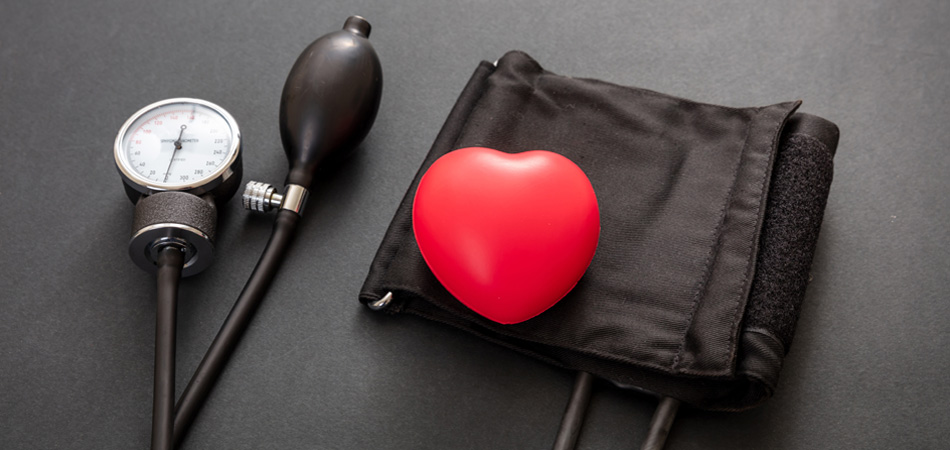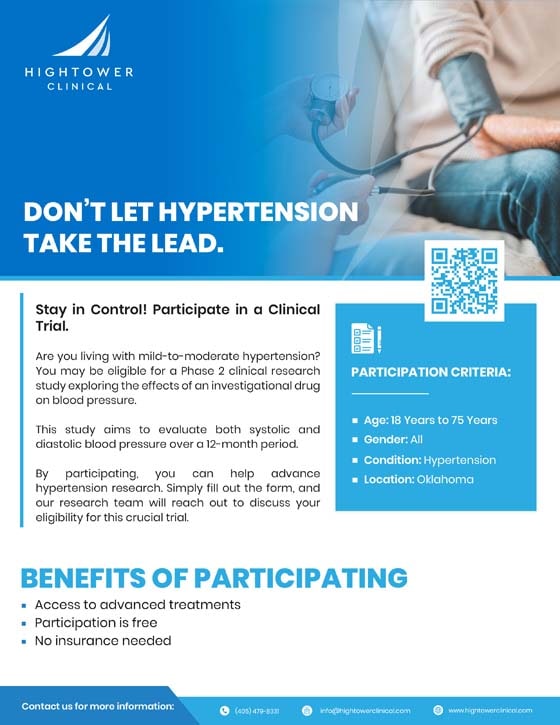Labile hypertension or erratic blood pressure is a type of high blood pressure that changes suddenly—sometimes for no clear reason. These ups and downs can be dangerous, especially if ignored. Regular tracking and proper medical care are key to managing erratic blood pressure effectively.
Introduction
Have you ever checked your blood pressure and found it high—then normal again the next time? That kind of swing might not be harmless. It could be a sign of labile hypertension, a condition that many people miss but one that’s becoming more important in heart health today.
This blog breaks it all down in simple words.
You’ll learn what erratic blood pressure really means, how it starts, and what warning signs to look for. You’ll also see how it compares to other blood pressure issues and find out what treatment options exist—including newer ones from clinical research.
Most importantly, you’ll understand when to consult with your cardiologist and why early action can make a big difference. Let’s get started.
Understanding Labile Hypertension—When Blood Pressure Doesn’t Stay Put
What is erratic blood pressure?
Erratic blood pressure means your blood pressure goes up and down often. One moment, it may be high. Soon after, it might return to normal. These shifts can happen within hours—or even minutes.
Unlike regular high blood pressure, l erratic blood pressure isn’t steady. It doesn’t stay elevated all the time. That makes it harder to spot and track.
So, what’s different from chronic hypertension?
Chronic hypertension stays above normal almost all the time. Doctors can diagnose it with a few consistent readings. But erratic blood pressure doesn’t follow a pattern. It jumps unexpectedly, often triggered by emotions or stress.
Moreover, these changes often confuse patients and doctors.
Many people mistake it for other types of fluctuating blood pressure, like paroxysmal hypertension or orthostatic hypertension. While those conditions also involve sudden shifts, their causes and timing are different. We’ll cover those differences shortly.
For now, know this: erratic blood pressure is a condition that swings both ways—quiet one moment, risky the next.
Common Erratic Hypertension Causes You Should Know
Why does your blood pressure suddenly spike?
Blood pressure doesn’t rise without a reason. But with erratic blood pressure, the reasons aren’t always easy to catch.
Common Triggers for Erratic Blood Pressure:
- Stress or emotional outbursts
- Anxiety and panic episodes
- Smoking or nicotine use
- Excess caffeine
- Hormonal imbalances
- Nervous system overactivity
- White coat syndrome
Also, underlying conditions may play a role. Thyroid issues, adrenal gland disorders, or nervous system sensitivity can all contribute.
So, if your blood pressure keeps changing, erratic blood pressure could be the cause—and knowing the triggers is the first step toward control.
What does labile hypertension feel like?
Labile hypertension doesn’t always cause symptoms. That makes it tricky to catch without regular checks.
However, when symptoms appear, they may come without warning. You might feel lightheaded, dizzy, or get a throbbing headache. Some people notice heart palpitations or a fluttering feeling in their chest.
At times, you may feel chest discomfort or tightness. These symptoms often fade once blood pressure returns to normal. But they can be scary and confusing when they happen.
Is it easy to detect?
No, not always. In fact, many people don’t feel anything at all. That’s why regular monitoring matters. A home monitor can help track the ups and downs.
Also, keeping a blood pressure log helps your doctor spot patterns. If you often feel “off” but can’t explain why, the log may hold the answer.
Is Labile Hypertension Dangerous or Just Annoying?
Some of the things tp consider include:
Can it lead to long-term health issues?
Erratic blood pressure might seem harmless at first. But over time, it can turn into a bigger concern.
In many cases, it may progress to sustained high blood pressure. That means your numbers stay high, even without stress or triggers.
Also, constant fluctuations may strain your heart and blood vessels. This raises your risk of heart disease and stroke.
Is labile hypertension dangerous?
Yes, it can be. Even if symptoms feel mild now, you shouldn’t ignore them. Frequent spikes may cause anxiety and reduce your quality of life.
Over time, it may affect both your body and your mind. So, if your blood pressure keeps swinging, don’t brush it off—talk to your doctor early.
Labile Hypertension vs. Paroxysmal and Orthostatic Hypertension
You might want to know:
| Type of Hypertension | Key Characteristics | Common Triggers | Who It Affects Most | Care Approach |
|---|---|---|---|---|
| Paroxysmal Hypertension | Sudden, unpredictable spikes in blood pressure come and go without a clear pattern. | Unknown; may not have obvious triggers. | Varies; often needs thorough evaluation. | Requires monitoring and investigation for underlying causes. |
| Orthostatic Hypertension | Blood pressure rises when standing up from sitting or lying down. | Postural changes. | Older adults, people with nervous system issues. | Monitor postural shifts; manage underlying neurological or age-related issues. |
| Erratic Blood Pressure | Unstable readings that fluctuate throughout the day. | Stress, emotional changes, daily habits. | Often seen in people with high stress levels. | Lifestyle changes, stress management, and regular monitoring. |
Treatment for Labile Hypertension: What Are Your Options?
Here’s what to focus on:
Can labile hypertension be treated?
- Yes, it can. Most people improve with simple changes in daily habits. These steps often work better than medication.
- First, focus on reducing emotional stress. You can try deep breathing, short walks, or relaxing music.
- Second, limit caffeine and stop smoking. These both raise blood pressure in sensitive people.
- Third, eat healthy meals with less salt and more vegetables. Also, get enough sleep each night.
Which approach works best—meds or lifestyle changes?
In many cases, lifestyle changes work best. Doctors usually avoid long-term medicine unless the spikes become more frequent.
However, they may prescribe short-term medication if symptoms are strong. This helps manage severe episodes.
Keep track for better care
Also, check your blood pressure often at home. Write down each reading and how you feel.
This log helps your doctor see patterns and adjust your care. Over time, it becomes a helpful tool.
Clinical trials may offer new hope
If current options don’t help, consider joining a clinical trial. Some trials test new ways to manage blood pressure shifts.
Ask your doctor if you qualify for a study. It could give you access to newer treatments still under research.
Discover Better Ways to Manage Labile Hypertension
Labile hypertension—also known as erratic blood pressure—causes sudden changes in blood pressure throughout the day. Unlike chronic hypertension, which stays consistently high, labile hypertension can spike unexpectedly and return to normal just as quickly. These swings can be caused by stress, anxiety, or even caffeine, and may increase your risk of heart disease or stroke if left unchecked.
Understanding this condition is key to protecting your heart health. Clinical research is actively exploring better ways to manage these fluctuations, including investigational treatments and lifestyle-based strategies.
How Clinical Research Helps Us Understand Labile Hypertension Better
Here are a few things to consider:
Why are clinical studies important for labile hypertension?
Labile hypertension still confuses many doctors. That’s why clinical research plays such a key role.
Studies help find new patterns, triggers, and better ways to manage these sudden spikes. Researchers look closely at how and when changes happen.
They also test which treatments work best. This can include both lifestyle changes and new medications.
Could you be part of the solution?
Yes, you can. Hightower Clinical Research works to bring better answers through trials focused on hypertension.
They aim to improve care by including real people like you. You may qualify for one of their ongoing or upcoming trials.
Ask your doctor if you’re a good fit. You could help advance research while learning more about your own health.
Conclusion: What Should You Do If You Suspect Labile Hypertension?
If your blood pressure keeps changing, it’s important not to brush it off. One of the best things you can do is start tracking your symptoms every day. Keep a log of how you feel, especially during moments when your blood pressure seems off. Alongside this, use a reliable home monitor to check your readings regularly. Jot down the numbers and note any physical sensations that come with them.
Pay attention to warning signs such as dizziness, chest pain, or a racing heartbeat—these symptoms shouldn’t be ignored. Most importantly, have a conversation with your doctor or cardiologist. They can help you figure out the next steps and ensure you’re managing your condition safely.
Ready to take the next step? Learn more about participating in hypertension studies with Hightower Clinical Research. You might also consider discussing investigational treatment options with your doctor to better manage your hypertension.





